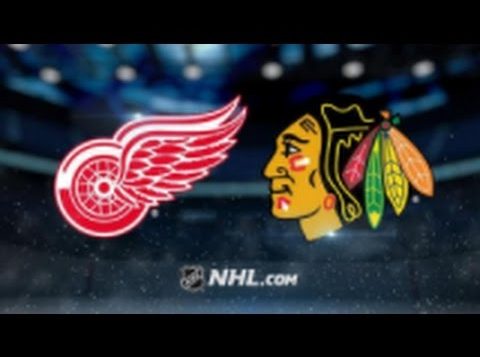This Day in Hockey History – March 19, 1933 – An Afternoon Experiment
The NHL schedules numerous afternoon games every season, and that number has increased this season. Surprisingly, the NHL took until the very end of its 16th season to hold the first matinee match. The date was March 19, 1933, and the time was 3:30 p.m. The timing of the game was considered an experiment. As the Chicago Tribune explained, “Sunday afternoon sports are permitted in all the American cities represented in the league and if today’s test is successful New York, Boston, and Detroit may hold Sunday afternoon hockey next fall.”
Chicago Stadium served as the laboratory with the Chicago Blackhawks and the visiting Detroit Red Wings as opponents. At that point, the teams were on opposite ends of the spectrum. Chicago had sunk to the bottom of the American Division rankings in their most disappointing season thus far. Meanwhile, Detroit had risen far above its predicted last place to lead the league. Both teams had their share of injuries with Chicago’s Taffy Abel and Detroit’s Ebbie Goodfellow unable to play.
NHL President Frank Calder attended the game, both to see how the fans reacted to the afternoon schedule and to follow-up on the incident involving the Blackhawks’ recent forfeit. About 5,500 to 6,000 attended the game, which was more than expected. The numbers and responses of the crowd led Chicago’s officials to deem the afternoon experiment a success.
The game itself was more of a success for the visitors than the home team. Most of the action took place in the second period. Chicago defenseman Billy Burch (Abel’s replacement) crashed into Detroit’s Frank Carson and hit the boards so hard he fractured his leg in two places. That led to a skirmish that led to one of his teammates leaving the ice with a severe cut on his face. This was also the period when Detroit took a three-goal lead. Shortly thereafter, Chicago’s Mush March scored twice within 30 seconds (at 16:10 and 16:40) while both teams were short from penalty calls. Although Chicago tried using five forwards in the third period, Detroit had no problem slipping around them to score a final goal, ending the game 4-2. The victory definitively gave Detroit first place in the standings.
After the rough game, a fight brewed as the players left the ice. According to the Chicago Tribune, Chicago’s Johnny Gottselig clashed with Detroit’s Voss, and then all team members “wedged into the stairway leading down to the dressing room, swinging and wrestling.” The Detroit Free Press thought it was actually Hap Emms that “almost came to blows” with Gottselig, but that “as other players moved toward the scene of the impending battle, the officials intervened and peace was restored.”
Detroit then went on to the playoffs, where they defeated the Montreal Maroons but fell to the New York Rangers, who would go on to defeat the Toronto Maple Leafs for the Stanley Cup.
Additional Sources:
- Mike Commito, Hockey 365: Daily Stories from the Ice (Toronto: Dundurn, 2018), kindle edition.
- John Kreiser, So You Think You’re a Chicago Blackhawks Fan?: Stars, Stats, Records, and Memories for True Diehards (Simon and Schuster, 2017), kindle version.
- “Hawks to Meet Red Wings Today in Season Final,” Chicago Tribune, 19 March 1933, part 2, p. 2.
- “Hawks Drop Last Home Game to Detroit, 4 to 2,” Chicago Tribune, 20 March 1933, p. 19.
- “Wings Regain First Place by Beating Hawks in Final, 4-2,” Detroit Free Press, 20 March 1933, pp. 13-14.














